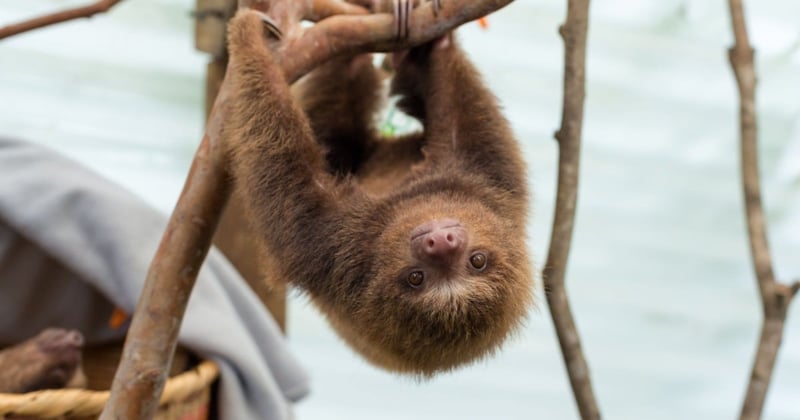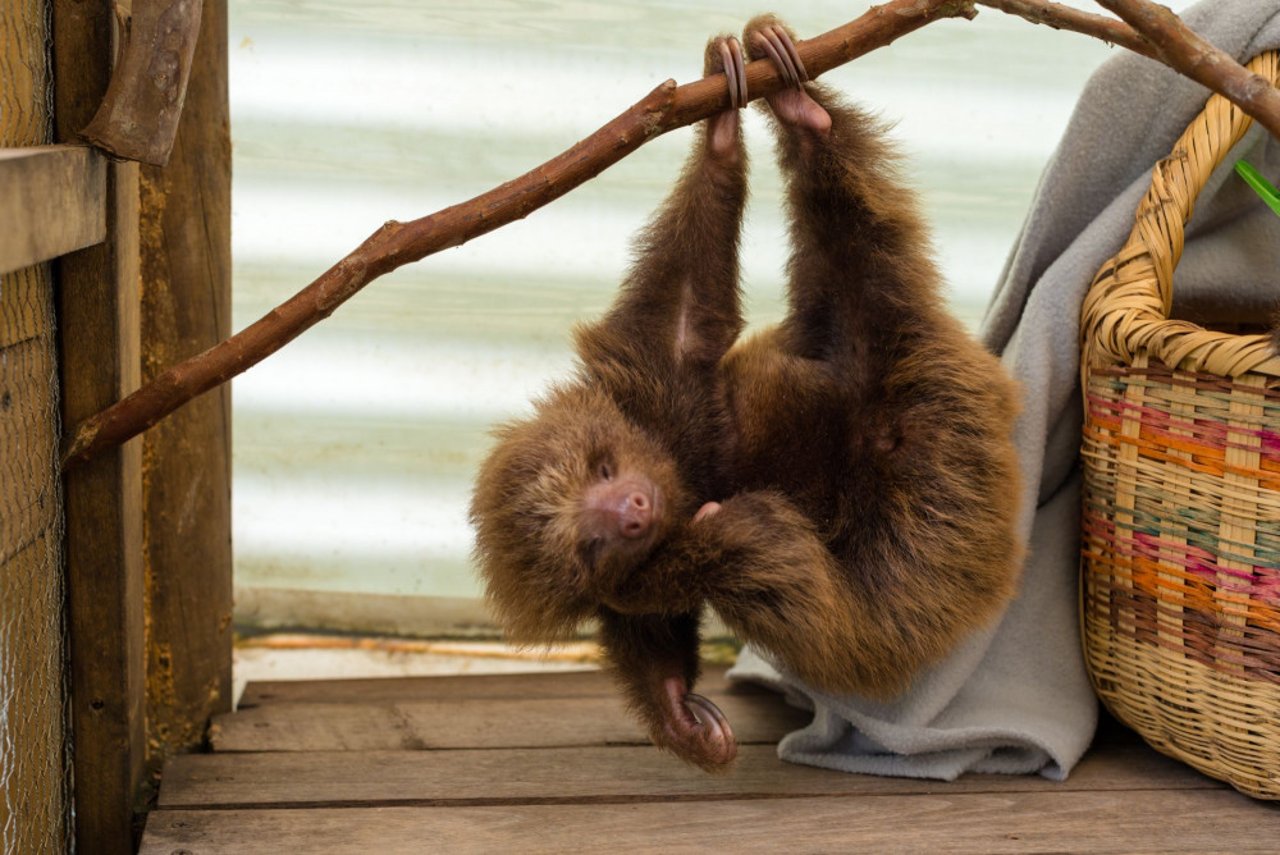
Rescued baby sloths get another chance
News
At the AIUNAU rehabilitation centre in the Andes Mountains of Colombia, orphaned sloths rescued from mistreatment at the hands of humans can recover and learn how to be sloths
The AIUNAU rehabilitation centre sits in a beautiful green valley rich with a mixture of trees and plants, with the Rio Medellin passing beside it.
To provide the best care and freedom for the rescued sloths, AIUNAU has several small shed habitats which the staff call ‘wombs’ because of the way they nurture and protect the baby sloths.
The wombs are the perfect size and height to allow the sloths to move and explore the tree branches inside, but still let the staff reach them easily if they need help. The sloths can see the surrounding trees through the Perspex roof, and feel the wind which blows through the ends of the habitat – all to familiarise themselves with the natural environment they will be returned to.
Paola, a staff member at AIUNAU, explains that sloths need extra special care:
“First, in the way you touch them, you must be gentle. You can’t speak loudly in front of them, because it can harm them. When we have a sloth in our arms, we have to forget about the rest of the world. Everything must be around that sloth. This is how we take care of them.”
When they need to rest, the sloths can climb into the wicker baskets filled with soft blankets that are placed along the sides of each habitat. The blankets are intended to resemble their mothers’ fur, providing some comfort for these orphaned babies.
Meet La Negrita
One of the sloths at AIUNAU is La Negrita, a two-toed female sloth, was only two months old when she arrived at the rehabilitation centre wrapped tightly in blankets. The staff suspect her mother was killed so she could be taken to be used with tourists or as a pet. In most cases people kill the mothers as they defend their babies, who are ripped from them, often causing serious injury and trauma.
Dehydrated and with digestive problems, La Negrita didn’t want to eat at first. She became weaker, which worried the staff. They feared the worst – sadly, some sloths do die after the mistreatment they suffer.
Image: When she is ready, La Negrita will be returned to the region she was rescued from.
But La Negrita eventually responded well to treatment. Soon she will be old enough to eat solid foods. She gets stronger every day and has become good at climbing, always eager to reach the fruit staff hang from different branches to encourage the sloths to explore.
While she learns to look after herself so she can be returned to the wild, the centre will start an education campaign in La Negrita’s region to stop people taking wildlife for profit.
“When we have a sloth in our arms, we have to forget about the rest of the world. Everything must be around that sloth. This is how we take care of them.
